Chedworth Roman Villa
This is my first post for a long time. I had hoped I would quickly get back into a routine of writing but unfortunately I have not been able to. So to start off easy I thought I would share some images of a recent trip to Chedworth Roman Villa, as a step back to regular postings.
The building of the villa commenced in approximately 120 AD. The development of the site and villa itself continued throughout the 2nd to the 4th century AD. The reconstruction below shows the villa as it would likely have been at the end of its development.
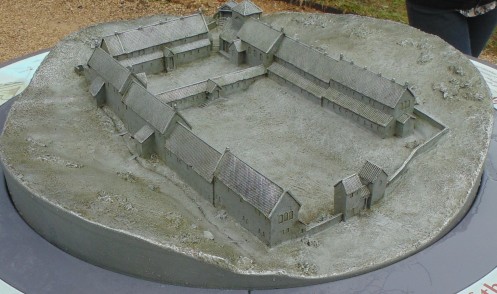
The site was discovered in 1864 and excavations were quickly undertaken. Shelters were erected to protect the unearthed mosaics and a museum built to store the finds from the site. The National Trust who manage the site have undertaken a number of projects since 2011 to provide a much improved visitor experience. The Trust are currently raising funds to create a further shelter to allow for the display of a recently discovered mosaic (the photo below is of an artists reconstruction of the mosaic as it has been recovered to protect it).
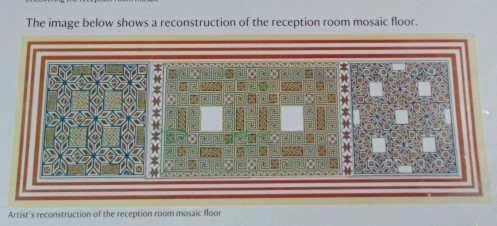
The images below are of a few of the mosaics. However, they do not do them justice (I am not a skilled photographer) and I would encourage a visit to the site if you are able to get there.
The most impressive mosaic is found in the villa’s dining area. The northern section of the mosaic is an intricate geometric pattern. Those dining at the villa would be sat in this section overlooking the mythological mosaic that would have been the main talking point of the room.
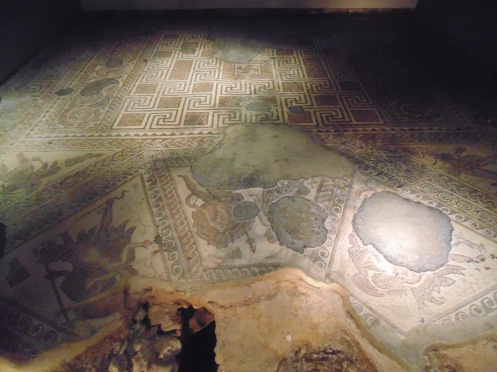
The images of the mythological section of the mosaic are depictions of various myths of Bacchus and his entourage. The central part of the mosaic is lost and several of the outer panels are damaged to the point that the subject matter cannot be identified. However, three sections are relatively intact. The first of these represent Bacchus and (presumably) Ariadne. Bacchus holds in his hands symbols of divinity and is looking backwards towards the female figure who faces him. This image is flanked by images of Satyrs and Maenads in the panels either side.
In the corners of the mythological section of the mosaic are personifications of the seasons. Unfortunately my photos did not come out very well due to the lighting in the room so I have only included the one image. Below is the image of summer, a flying naked youth who is holding a basket and garland of flowers.
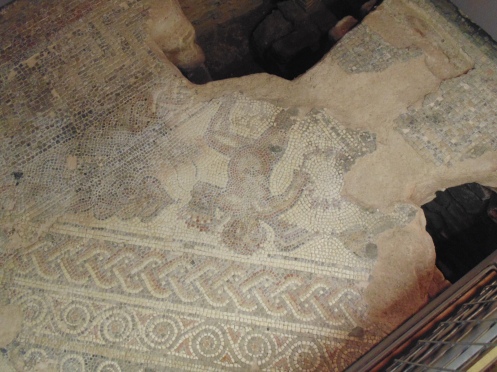
There are mosaics throughout the other parts of the villa. These are more often than not geometric patterns in the corridors and bathing areas. However, there are some communal areas such as the changing room for the baths where more complex imagery can be found. The more complex pattern would have been appropriate for the changing rooms, as refreshments may have been served and board games played as a social activity before bathing .

Corridor Mosaic
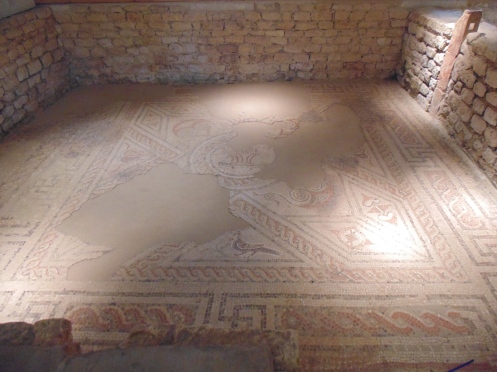
Changing Room Mosaic
This post has focused on only a few areas of the large and palatial villa. I would reiterate that it is well worth a visit to see the mosaics up close, as well as other parts of the villa such as the Nymphaeum, bathing house and museum (I found the hand print on one of the tiles a fascinating connection to the past).

Nymphaeum

Hand Print on a Roof Tile



Trackbacks & Pingbacks